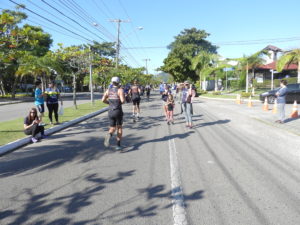Ironman Brasil in Jurerê Internacional is a distinguished event with great presence of athletes and intense day for sports lovers. In this context, the question of the transition between the modalities. How can we relate this phase of a high-grade proof of demand with the moments of our life and learn from the athletes to adapt to an inevitable change?
Ironman Brasil in Jurerê International: 3 Questions to take into consideration in the transition.
When we talk about a test with Ironman Brasil in Jurerê International we remember that training is very important. The training method depends on the personal goals of each one. For those athletes who seek good results is fundamental, think and act around the preparation for transition. The same involves the passage of one modality to another and includes the physical environment that the same happens.
1-Planning aspect:
Life demands of all of us a certain capacity for predictability. To look at some situations it is important to map the path that will make the effort to be spent easier. In a test like Ironman Brasil in Jurerê International this is no different. Everything begins by reading the rule of the test, goes through the detailing of all the equipment that will be used and ends with the mindset of the processes within the physical environment of the transition.
The basic rules in the transition
- The principle of respect for the other competitors.
- Meeting the right time to remove equipment like helmet and bonnet is important. These are personal security issues that are above “seconds we can win.” In a test such as Ironman Brasil in Jurerê International, the athlete will have to fulfil the determination to avoid penalties.
The mental mapping
When we live moments of transition in our lives, planning is also fundamental. Studying the way to deal with change, goes through the definition of new goals and strategies that we will adopt. This will help to make the passage more peaceful. When we talk about transition in our lives, the first one that appears with great impact is that of adolescence to the adult stage. Precisely at this stage the planning issues are not yet clear. Often we go on intuition following a path created in our minds and we can not transit with quality. But there are many questions that expose this decisive moment. It is the example of athletes of high performance and their great need of planning to deal with the inevitable change in a race or in life, remembering that they think and train the execution in order to perfect the path that will come.
2-Executive aspects:
The two transitions of the test require executive capacity. Just like in life, it’s not enough to draw the path mentally. It is necessary to do and in the best possible way. The implementation of the transition in the Ironman Brasil test in Jurerê was thus briefly described by Guilherme, one of the athletes of the race and who lives in the north of the island of Santa Catarina.

The first transition
The first transition is between swimming and cycling. “Organization is the foundation of our life. You have to make everything very well laid out to get out of swimming. In the area of the transition you have your easel, where is your bag and inside has to be all organized: the helmet, the food the garment you will use. Next you need to memorize which corridor your bike is in. The transition decides a lot of evidence. This moment is a little more time consuming, besides the change of clothes, has the issue of food that is the basis for a good cycling “.
The second transition
William points out that the stage also requires a lot of organisation. Putting the bike on the easel and preparing to put the running shoes is the natural way. Once again the training is essential: “The transition is also very trained, simulating the arrival and delivery of the bike and everything else that involves this moment”.
Image Proof Ironman Brasil 2018
3-Physical and emotional aspects:
Guilherme also recommends that it is necessary to simulate throughout the training period to lessen the psychological and physical impact on the test. He justifies that: “If you are not trained for some situations in such a long test, your body can respond in a wrong way. If you are accustomed to changing clothes fast and during the test does slower than the trained, perhaps your body does not understand right and can bring some damage there in front. The time to make a mistake is at practice time. “
The transition from swimming to cycling can cause problems of dizziness, pressure drop and other discomfort. Guilherme describes that there is a level of adrenaline that often on the bike, after 20 or 25 kilometers is that tends to normalize. In the circulatory question between a step of swimming and cycling, he claims that the body feels a lot and all this needs to be trained.
The readjustment is decisive to avoid the feeling of catching the legs. The techniques of finishing the cycling test serve to alleviate problems. Being ready for change and using the right strategy to cope with body fatigue will make a difference to maintaining motivation, so important for the athlete to stand firm towards the end of the race.
by Daniel

